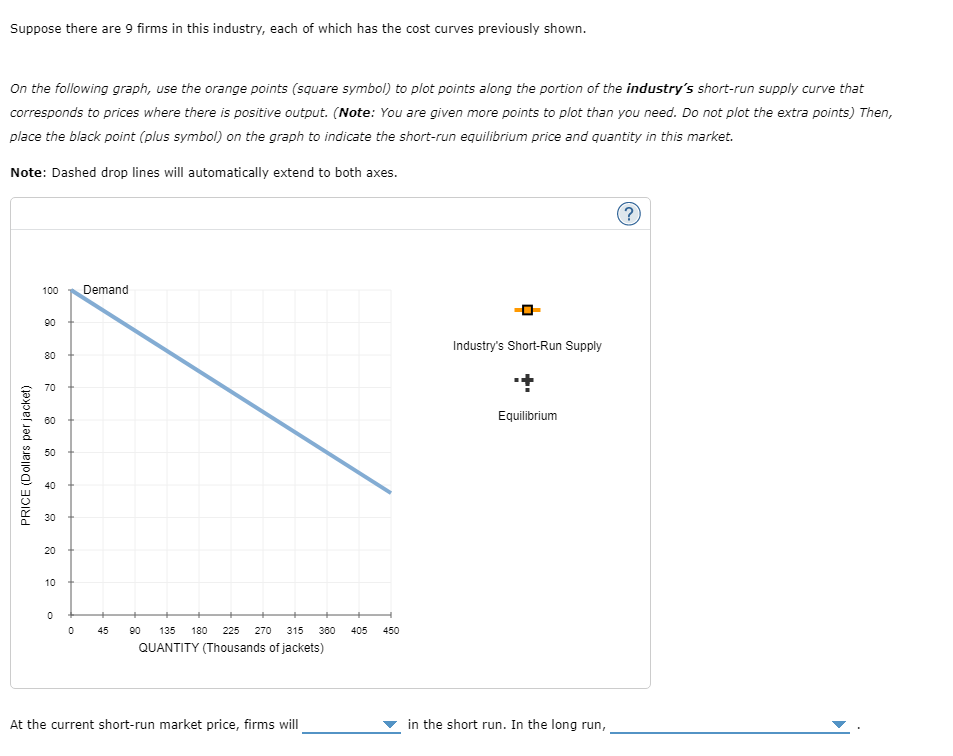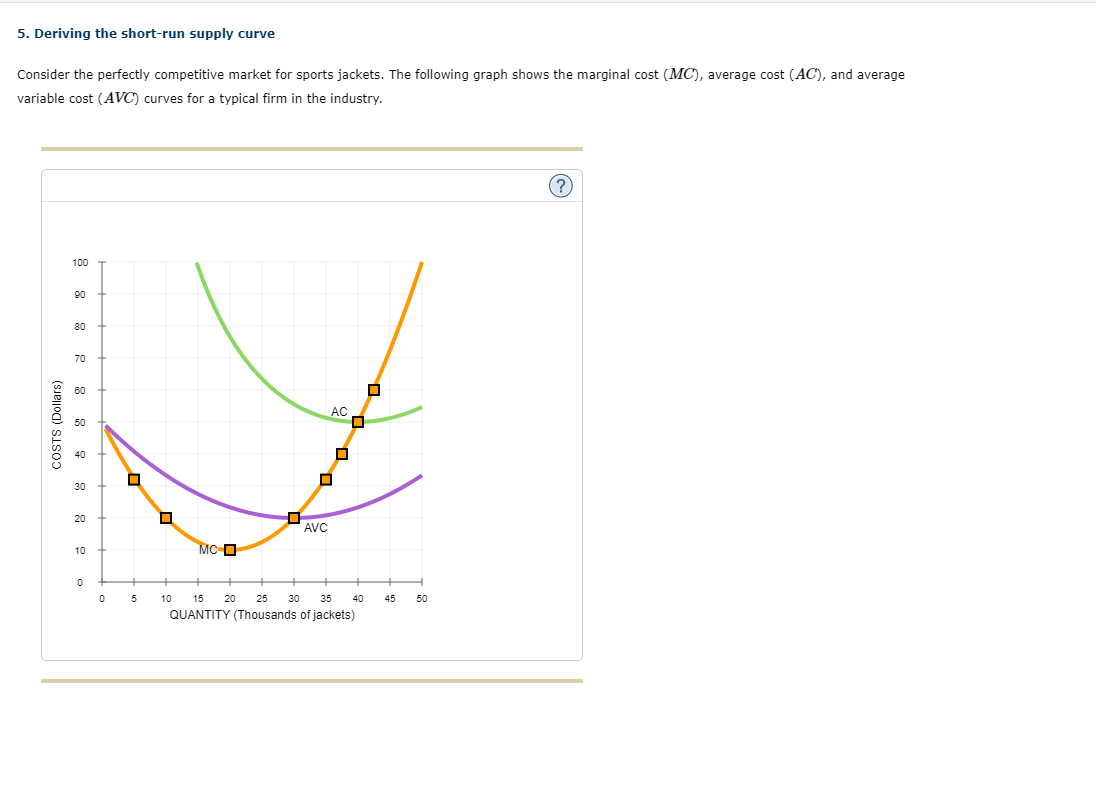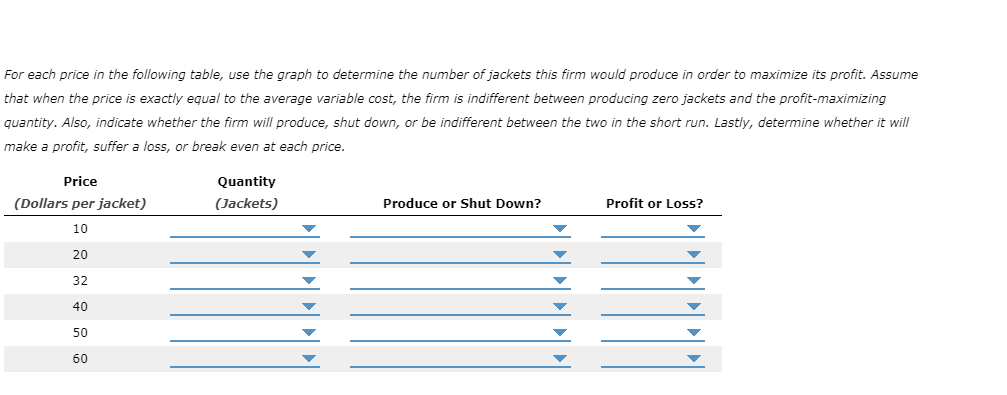Answered step by step
Verified Expert Solution
Question
1 Approved Answer
On the following graph, use the orange points (square symbol) to plot points along the portion of the firm's short-run supply curve that corresponds




On the following graph, use the orange points (square symbol) to plot points along the portion of the firm's short-run supply curve that corresponds to prices where there is positive output. Note: You are given more points to plot than you need. Plot your points in the order in which you would like them connected. Line segments will connect the points automatically. PRICE (Dollars per jacket) 100 90 80 70 50 40 2 8 8 9 8 30 20 10 0 05 10 15 20 25 30 35 40 45 50 QUANTITY (Thousands of jackets) Firm's Short-Run Supply Suppose there are 9 firms in this industry, each of which has the cost curves previously shown. On the following graph, use the orange points (square symbol) to plot points along the portion of the industry's short-run supply curve that corresponds to prices where there is positive output. (Note: You are given more points to plot than you need. Do not plot the extra points) Then, place the black point (plus symbol) on the graph to indicate the short-run equilibrium price and quantity in this market. Suppose there are 9 firms in this industry, each of which has the cost curves previously shown. On the following graph, use the orange points (square symbol) to plot points along the portion of the industry's short-run supply curve that corresponds to prices where there is positive output. (Note: You are given more points to plot than you need. Do not plot the extra points) Then, place the black point (plus symbol) on the graph to indicate the short-run equilibrium price and quantity in this market. Note: Dashed drop lines will automatically extend to both axes. 100 Demand 90 80 80 70 70 60 8 60 PRICE (Dollars per jacket) 40 30 20 10 0 45 90 135 180 225 270 315 360 405 450 QUANTITY (Thousands of jackets) At the current short-run market price, firms will (?) Industry's Short-Run Supply Equilibrium in the short run. In the long run, 5. Deriving the short-run supply curve Consider the perfectly competitive market for sports jackets. The following graph shows the marginal cost (MC), average cost (AC), and average variable cost (AVC) curves for a typical firm in the industry. COSTS (Dollars) 100 90 80 70 60 AC 50 40 30 20 10 + AVC MC 0 + 0 5 10 15 20 25 30 35 40 45 50 QUANTITY (Thousands of jackets) (?) For each price in the following table, use the graph to determine the number of jackets this firm would produce in order to maximize its profit. Assume that when the price is exactly equal to the average variable cost, the firm is indifferent between producing zero jackets and the profit-maximizing quantity. Also, indicate whether the firm will produce, shut down, or be indifferent between the two in the short run. Lastly, determine whether it will make a profit, suffer a loss, or break even at each price. Price (Dollars per jacket) 10 20 32 40 50 60 Quantity (Jackets) Produce or Shut Down? Profit or Loss?
Step by Step Solution
There are 3 Steps involved in it
Step: 1

Get Instant Access to Expert-Tailored Solutions
See step-by-step solutions with expert insights and AI powered tools for academic success
Step: 2

Step: 3

Ace Your Homework with AI
Get the answers you need in no time with our AI-driven, step-by-step assistance
Get Started


